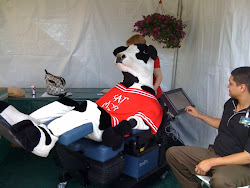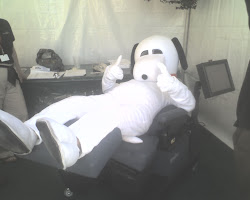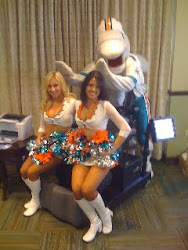The most recent exercise and fitness craze to sweep the nation is Core Stabilization. It has been purported that core stabilization will cure every ache and pain you have. The accepted principal to support this theory is that a bad back or low back pain is caused by an instability or imbalance of the spinal musculature. It is these weak and unbalanced core muscles that are linked to low back pain. Weak core muscles result in a loss of appropriate lumbar curve and a swayback posture. Stronger, balanced core muscles help maintain appropriate posture and reduce strain on the spine.
Core Stabilization is an approach that puts the focus on the abdominal and spinal muscles in a rehabilitation program, resulting in the prevention of low back pain and a general well being. Historically, this is not a new concept. The practices of Yoga, Pilates and Tai Chi all share the concept of a central body powerhouse or a “girdle of strength”, which is related to physical health and well being. A strong core distributes the stress of weight-bearing and protects the back.
Recent research identifies two muscles that act as stabilizers for the back. The multifidus and the transverse abdominis, “the deep muscles”, have the responsibility to stabilize the spine without compromising the integrity of the joints. Evidence shows that in patients with low back pain the size of these two muscles are reduced; thereby reducing their effectiveness in performing spinal stabilization
A Core Stabilization exercise, or training, can improve strength, endurance, and control of these important deep muscles. A Stabilization Protocol can be performed utilizing the SpineSix BioMotion Spinal System:
• The patient would begin using the SpineSix in a passive mode, Passive Mobilization, by just laying supine on the chair and being compliant with the motions of the device specified by the clinician.
• The patient would then progress into Active-Assistive Range of Motion, where they would activate their core musculature and actively assist the motions of the SpineSix, moving in the same direction of the device.
• The next progression for the patient is the Eccentric Training, where the patient activates their core and resists the movements of the SpineSix, moving in the opposite direction of the device.
• The final progression, Dynamic Core Stabilization, the patient lifts their calves off the calf-rest of the SpineSix, keeping their knees bent and allowing the SpineSix to complete its movements, all while engaging their core muscles.
Not all patients will have the strength or endurance to perform the Dynamic Core Stabilization protocol, even educating them on activating their core muscles and assisting the SpineSix is an added benefit to their therapy.
Core Stabilization benefits everyone, from athletes to the elderly, in better posture and balance. Movements will become more powerful and efficient, and they will become less likely to be injured. The bottom line: patients will be stronger and more efficient in performing activities of daily living and will be living their lives without limitations.
This Blog is maintained by MediCepts, Inc, manufacturer of the SpineSix.All content has been provided by employees of MediCepts, Inc.
Revolutionay Rehab Equipment Effective For Back Pain Relief In Spinal Rehabilitation Patients
This Blog is maintained by MediCepts, Inc, manufacturer of the SpineSix.All content has been provided by employees of MediCepts, Inc.
Thursday, July 2, 2009
Subscribe to:
Post Comments (Atom)

Archives
-
▼
2009
(20)
-
▼
July
(12)
- Spinal Stenosis and Back Pain Relief
- Fibromyalgia Pain - Gentle SpineSix Therapy Offers...
- The Back Pain Club
- 3 Steps For Whiplash Pain Relief
- Will Summer Be A Pain In The Neck? Back Pain Relie...
- SpineSix Therapy Gentle Enough For Fibromylgia Pat...
- Sciatica Relief With SpineSix Therapy
- Back Pain Caused By Degenerative Disc Disease (DDD)
- Back Pain And Neck Pain Caused By Arthritis
- When Does Back Pain Mean Back Surgery?
- Back Pain And Fear Avoidance Behaviors
- Core Stabilization Provides Back Pain relief
-
▼
July
(12)
Labels
- arthritis (1)
- back pain (18)
- back pain equipment (1)
- back pain relief (6)
- back surgery (1)
- back-pain (1)
- causes (1)
- causes of back pain (1)
- chiropractic equipment (1)
- Chiropractor (1)
- core stabilization (1)
- degenerative disc disease (1)
- diagnosis (1)
- Dr. Haney (1)
- fear avoidance behavior (1)
- fibromyalgia (2)
- fibromyalgia-treatment (1)
- leg pain (1)
- low back pain (2)
- lower (1)
- lower back pain (2)
- medical device (1)
- medical equipment (5)
- muscle sprain (1)
- muscle strain (1)
- neck pain (10)
- neck-pain (1)
- Oneonta (1)
- pain relief (1)
- physical therapy (8)
- physical therapy equipment (4)
- purchase (1)
- rehab (3)
- rehab equipment (4)
- rehabilitation (3)
- rehabilitation equipment (3)
- relief (3)
- sciatica (1)
- shoulder pain (1)
- shoveling snow (1)
- spinal stenosis (1)
- spine (3)
- spinesix (15)
- sports injuries (1)
- sports injury (1)
- treatment (3)
- upper back pain (1)
- whiplash (1)
Cervical and Lumbar Mobilization

Good For A Broad Range Of Patients

SpineSix is Very Patient Compliant

Yes - That Is Snoopy!
SpineSix Has Lots Of Fans

Miami Dolphin Cheerleaders & Mascot





No comments:
Post a Comment